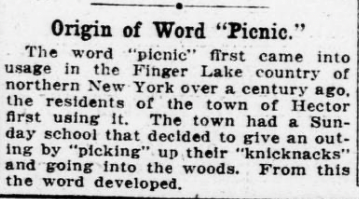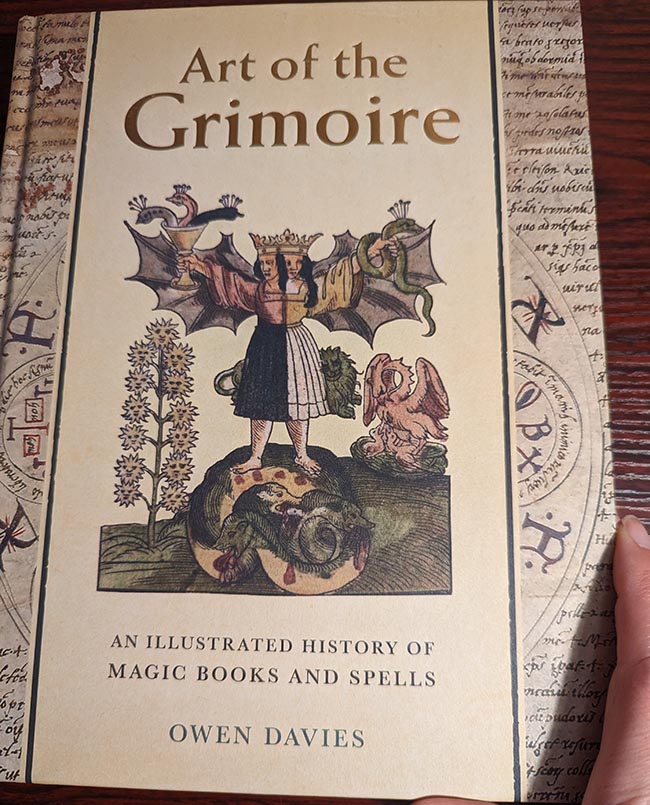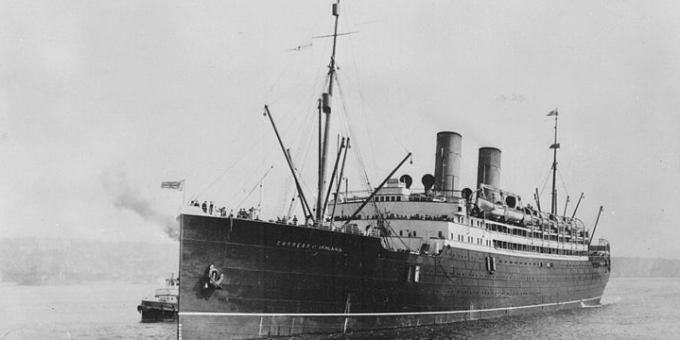
The RMS Empress of Ireland was an ocean liner that sank near the mouth of the Saint Lawrence River after the Norwegian collier SS Storstad collided into its side on May 29, 1914.
This happened just two years after the Titanic sank, but unlike the Titanic, the Empress of Ireland had more than enough lifeboats for everyone.
And yet out of the 1,477 people on board, 1,012 people died.
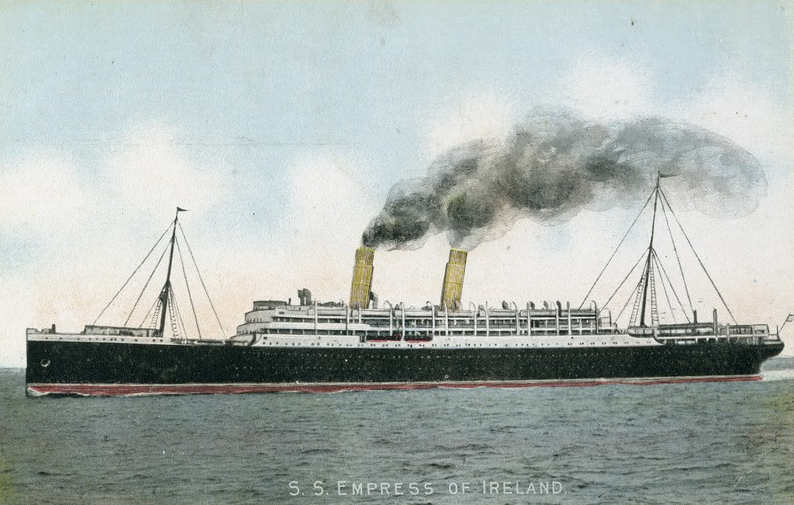
On May 28, 1914, the Empress of Ireland left Quebec City for Liverpool.
Then, in the early morning of the 29th, as the Empress of Ireland made her way down the Saint Lawrence River, the masthead lights of the Storstad were spotted several miles away.
A fog rolled in and visibility was cut short. The ships resorted to using fog whistles, but it was no use in the dark. The men were blind to everything in their path.
At 1:56 AM, the Storstad crashed into the Empress of Ireland and opened up a hole in her side. The lower decks quickly flooded as the passengers slept.
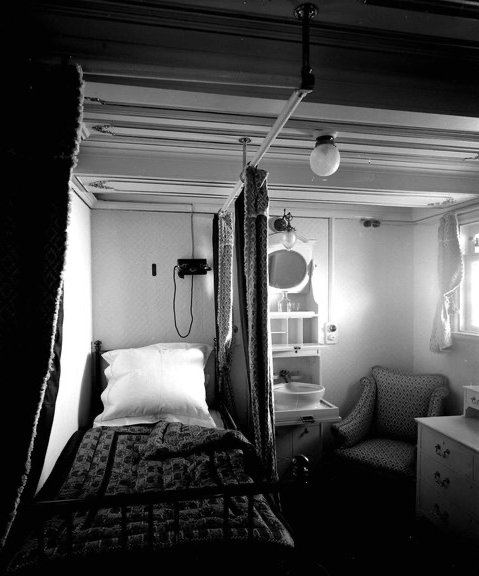
A newspaper reported that:
“The steel-pointed prow of the Storstad struck the liner amidships and then forged aft, ripping and tearing its way through the Empress of Ireland.
“… Into [the hole] the water poured with the force of a Niagara.
“The bow of the Storstad smashed its way though berths on that side of the ship, killing passengers sleeping in their berths and grinding bodies to pieces.
“Reaching the stern of the big liner, the Storstad staggered off in the darkness, her bow crumpled by the impact. Her commander was ready a few minutes later, when he found his ship would float, to aid the crippled and sinking Empress, but he was too late to save the majority of those on board.” [Source]
Those who were in the upper rooms woke during the crash and quickly ran to the deck.
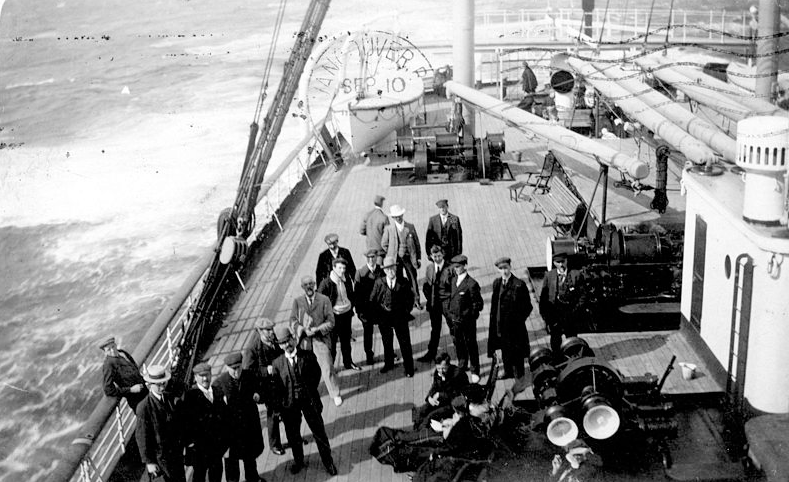
A reporter wrote:
“Up they swarmed on deck in their night clothing to find the ship heeling away to port and the deck slanting at a degree that made it almost impossible to stand even clinging to railings.
“Men and women, shrieking, praying, crying for aid that was fated to arrive too late, fell over one another in that last struggle for life on board the doomed Empress of Ireland.
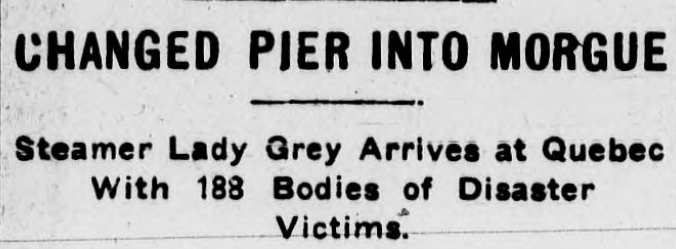
“Frenzied mothers leaped overboard with their babies in their arms. Others knelt on deck and tried to pray in the few moments left to them. Some were flung overboard by the heeling of the sinking ship and some broke their legs or arms in trying to reach the lifeboats.” [Source]
Only five lifeboats managed to escape the Empress of Ireland, and then the ship’s boilers exploded.
“It was the explosion of the boilers struck by the cold water. A geyser of water shot upward from the midship section, mingled with fragments of wreckage, that showered down upon the passengers still clinging to the rails forward and upon those struggling in the water.
“The explosion destroyed the last hope of the ship’s floating until rescue could arrive, for the shock had smashed the forward steel bulkhead walls that had up to then shut out the torrents invading the after part. The water rushed forward and the Empress of Ireland went swiftly to her doom, carrying down with her hundreds of passengers who stood on her slanting deck, their arms stretched upward and their last cries choked in the engulfing waters.
“Intense darkness covered the waters when the Empress of Ireland made that final plunge, but the fog lifted a few minutes later and then came the first faint streaks of dawn.
“It lighted waters strewn with wreckage and struggling passengers, who strove to keep afloat.” [Source]
It took only fourteen minutes for the Empress of Ireland to sink beneath the waters.
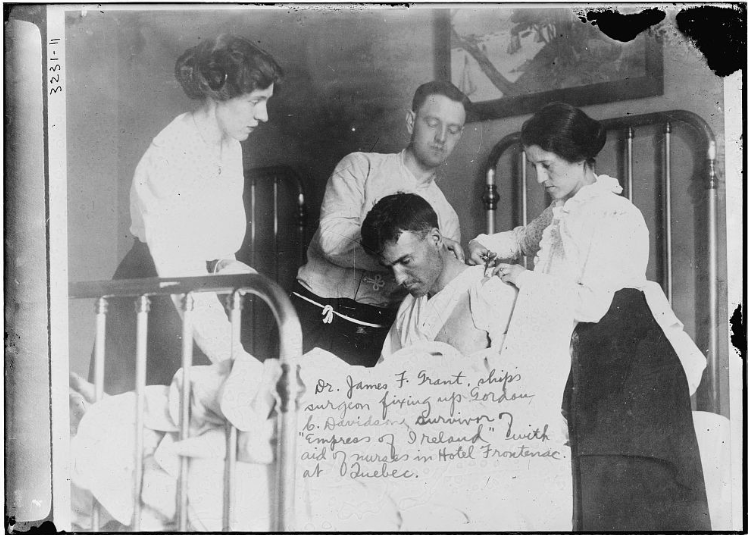
As for the survivors, news came out of Quebec:
“So quickly did the Empress sink that those passengers fortunate enough to get into the lifeboats found themselves garbed only in their night clothes. No baggage was saved.
“The condition of the survivors was pitiable. Some had broken arms and legs and all had suffered terribly. …[A] prominent lawyer from Montreal, saved himself by clinging to a raft. When the rescue ships docked here, the station platform was converted into a hospital and the townspeople, bringing food and clothing, united in a common effort to aid the sufferers.
“Twelve bodies with faces covered lay side by side on the wharf. They were passengers who had made it to the lifeboats, but were fatally hurt.”
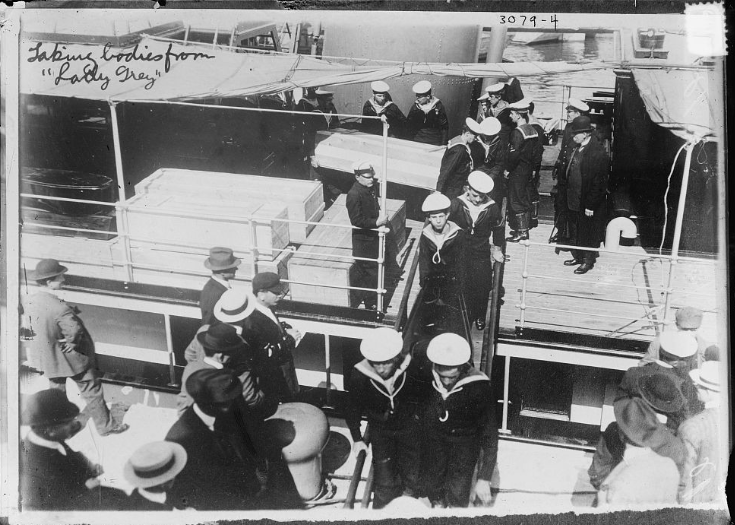
One of the survivor’s recalled:
“I was asleep like most of the passengers when the collision came. There was a sickening crunching of wood and steel and then a grinding, ripping sound as the Storstad smashed her way along the port side of our ship.
“I knew that we had been struck and I rushed to the staterooms of some friends and shouted to them to get up, as the ship was sinking. Stateroom doors flew open all along the corridor and men and women began to rush for the grand forward. Those aft must have been drowned in their berths.
“On the deck officers of the ship, partially dressed, were rushing about urging passengers to be calm. Sailors under orders were trying to launch the lifeboats.
“The darkness was intense and a few minutes after I reached the deck the electric lights went out. At that time there were still hundreds of passengers below trying to grope their way through the darkened corridors to the companionway and reach the deck. Most of them went down with the ship, for the corridors below filled right after the explosion of the boilers.
“I leaped overboard in despair, just before the ship went down and managed to find a bit of wreckage to which I clung.” [Source]
Rescue ships began to bring in the bodies and the pier became a morgue:
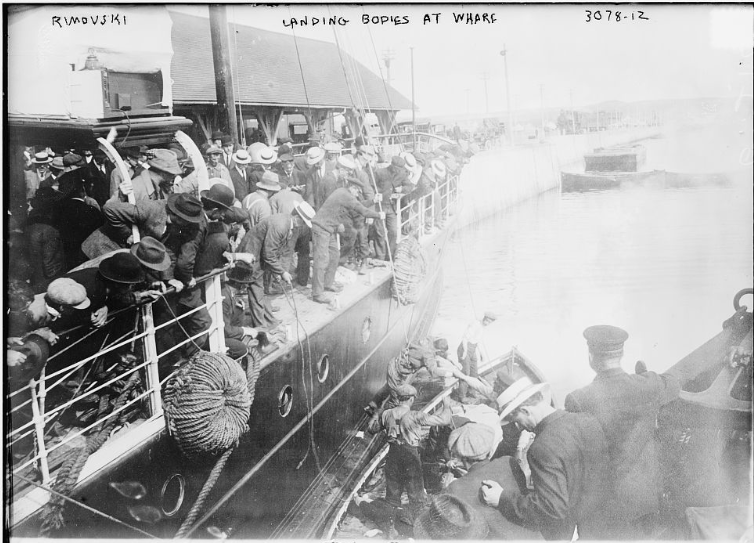
“The coffins were carried ashore and the mournful work of identification began without delay.
“The three tables, each 100 feet long, soon held coffins of every description. Assembled on one were twenty-five little white caskets that held the bodies of children. Besides the children’s caskets there were 88 containing the bodies of adults. The other victims were brought here in rough pine boxes hastily nailed together for the occasion.” [Source]
One man who searched for his wife among the dead, said:
“If only I had died instead of her. We slid down the deck into the water in each other’s arms, and then the force of the explosion as the ship went under parted us. For a moment I was stunned and did not know what happened, but very soon I knew I was alone.” [Source]
Meanwhile, in Liverpool, where the Empress of Ireland was heading:
“Pathetic scenes enacted at the office of the Canadian Pacific railway in this city Friday. Crowds of weeping men and women begged for news of the officers and crew of the Empress of Ireland, the majority of whom were gathered here. When confirmation of the disaster was received several of the women fainted. Friday’s scenes were a duplicate of those witnessed at the time the Titanic went to the bottom. [Source]

